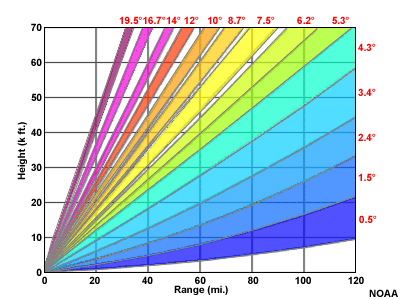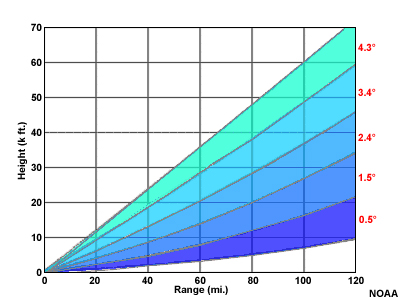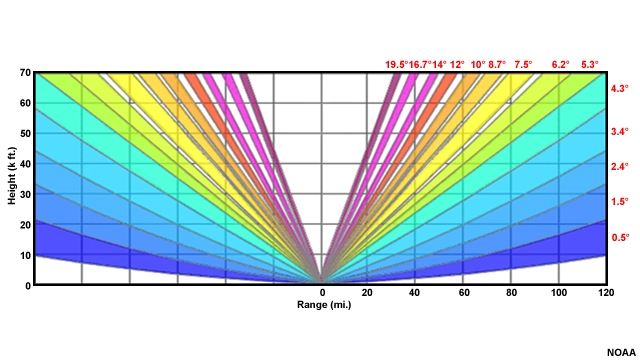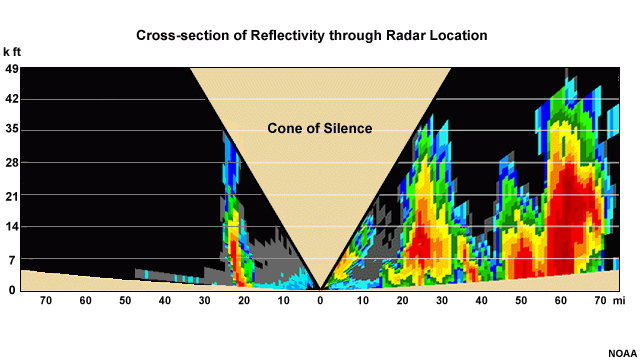Overview of Weather Radars » Scanning Modes
There are two common scanning modes for a NEXRAD WSR-88D radar: precipitation and clear air.

Precipitation Scan Mode: NEXRAD WSR-88D radar beam heights with distance for different antenna elevation angles (red numbers) used in a precipitation volume scan pattern
Precipitation mode is used when precipitation is occurring or is expected in the forecast area. In this mode, the radar scans several elevation levels using a pulse repetition frequency (PRF) that allows forecasters to quickly receive information about the atmosphere.

Clear Air Scan Mode: NEXRAD WSR-88D radar beam heights with distance for different antenna elevation angles (red numbers) used in a clear air mode volume scan pattern
Clear air mode is used when no significant precipitation echoes are in the area, to examine very light precipitation or other particulates, and to detect subtle boundaries or fronts. Lower elevation angles are used since this is primarily where clear air targets such as dust, birds, and insects will be located.

Notice that there is a significant portion of the troposphere directly above the radar that is not scanned. This area is referred to as the "cone of silence."

This is not usually a problem when precipitation is widespread and light-to-moderate, but it can mean that the top portions of thunderstorms within about 20 km (12 miles) will not be observable.